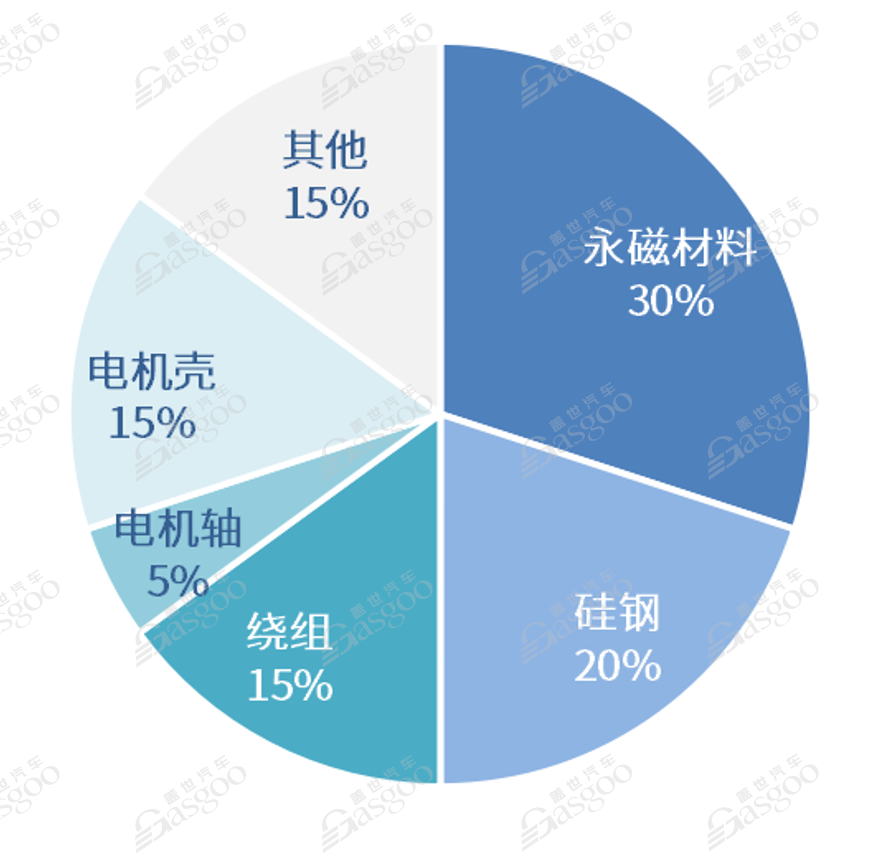Why has the flat wire drive motor become the industry trend?
The efficiency is only increased by 1%. Why has the flat wire drive motor become the industry trend? What are the cost components of a drive motor?
Flat wire motors have multiple advantages over traditional round wire motors
In the “new four modernizations” of the automobile industry, electrification is the primary condition. If electric vehicles want to truly achieve large-scale popularization, they must try their best to reduce costs. Nowadays, battery costs remain high, and flat wire motors have gradually entered the industry's vision as a new cost reduction direction.
Chart 1 Efficiency comparison between flat wire motor and round wire motor
Source: AVIC Securities
As shown in the figure above, the average efficiency of flat wire motors is 1.12% higher than that of traditional round wire motors, and it only increases by 2.02% at full speed. Why has such a small improvement in efficiency made flat wire motors so popular that it has even revolutionized the entire drive motor industry?
The answer to this question lies not only in the higher efficiency of flat wire motors, but also in the multifaceted positive effects brought about by increased efficiency. First of all, the gaps between flat wires are much closer than those of round wires. The slot filling rate is increased from 40% to 70% of that of round wires, and the motor conversion efficiency is increased by 1.12%. Therefore, in urban congested traffic conditions with low speed and high torque, flat wires can The working efficiency of the motor can be 10% higher than that of the round wire. The saved electric energy will help the battery to further reduce its capacity, and the cost of the entire vehicle will also be reduced.
Secondly, the higher the slot full rate and the more wires, the stronger the magnetic field generated, the greater the power of the motor, and the stronger the power of the vehicle, which can also save electric energy.
In addition, flat wire motors conform to the trend of lightweight and integrated electric drive systems. The smaller size is conducive to the high integration of electric drive systems. For example, BYD's world's first eight-in-one electric powertrain combines drive motors, reducers, DC converters, vehicle controllers, motor controllers, and vehicle chargers. The eight modules of , distribution box and battery manager are integrated, and the overall efficiency exceeds 89%.
Generally speaking, the main advantages of flat wire motors are:
It has higher efficiency and economic advantages; high heat dissipation and strong power at high temperatures; small size, high power density and stronger power; low electromagnetic noise, making the vehicle quieter. At present, the output of flat wire motors is relatively small, and the scale effect has not yet been realized. After mass production, it will have advantages in manufacturing costs and vehicle running costs.
Drive motor cost structure
Cost analysis of permanent magnet synchronous drive motor
At present, the domestic penetration rate of permanent magnet synchronous motors exceeds 90% and is the mainstream form of drive motors. Firstly, because permanent magnet synchronous motors have good low-speed performance and high conversion efficiency, they are very suitable for complex working conditions with frequent starts and stops in urban traffic. Secondly, because The NdFeB permanent magnet material in the permanent magnet synchronous motor requires the use of rare earth resources, and China has 70% of the world's rare earth resources, and the total output of NdFeB magnetic materials reaches 80% of the world , so China is more keen on using permanent magnet synchronous motor.
Among the costs of permanent magnet synchronous motors, the cost of permanent magnet materials accounts for the highest proportion. The raw materials for manufacturing permanent magnet synchronous motors mainly include neodymium iron boron, silicon steel sheets, copper and aluminum. Among them, the permanent magnet material neodymium iron boron is mainly used to manufacture rotor permanent magnets, and the cost composition is about 30%; silicon steel sheets are mainly used to make customized The cost composition of the rotor core is about 20%; the cost composition of the stator winding is about 15%; the cost composition of the motor shaft is about 5%; and the cost composition of the motor shell is about 15%.
As the permanent magnet synchronous motor industry becomes increasingly mature, the industry's cost reduction perspective gradually turns to copper wire windings, that is, the transition from round wire windings to flat wire windings. However, the initial investment in flat wire winding production lines is relatively large, and the scale effect of flat wire motors has not yet been reflected. , after mass production, it will become a new cost reduction point for permanent magnet synchronous motors.





























 XINDA
XINDA